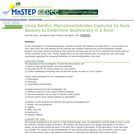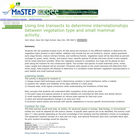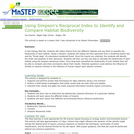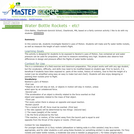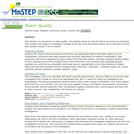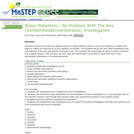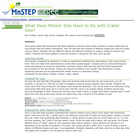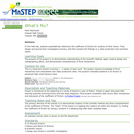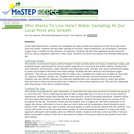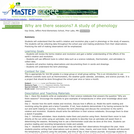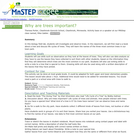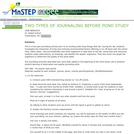
This is a two part journaling activity prior to an existing week long biology field lab. The journaling activities described here have been added to the beginning of the Pond Study Lab to enhance student learning of observation and quality journaling skills.
- Subject:
- Biology
- Life Science
- Material Type:
- Activity/Lab
- Provider:
- Science Education Resource Center (SERC) at Carleton College
- Provider Set:
- Pedagogy in Action
- Author:
- Lane Bendzick
- Date Added:
- 08/16/2012
